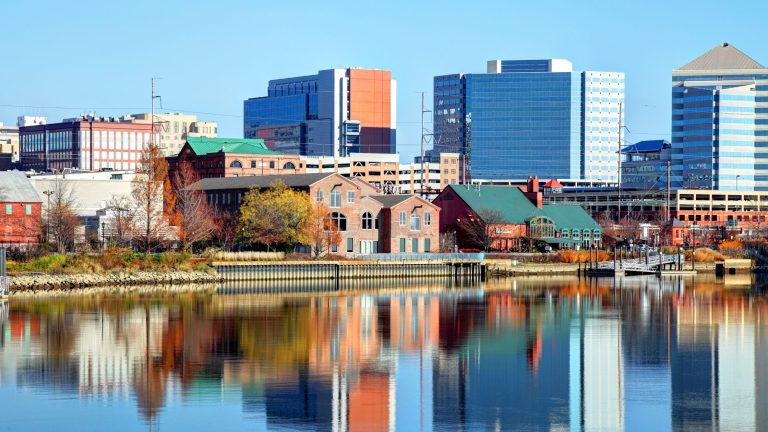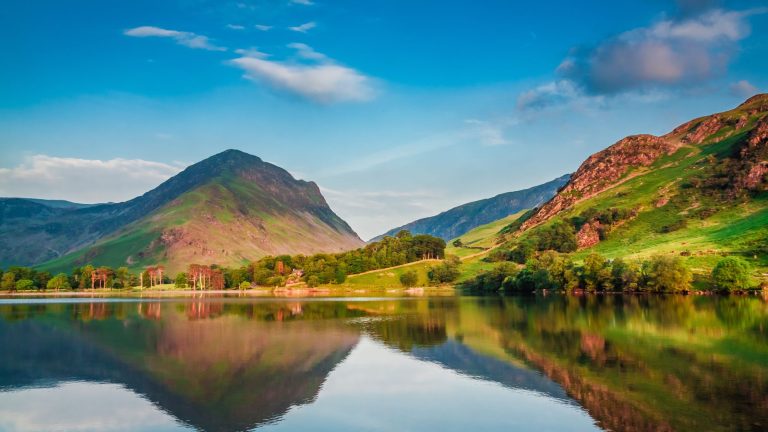When Should Your Family Visit Switzerland’s Lakes and Mountains?
Summer steals the spotlight, but Switzerland’s shimmering lakes and majestic mountains welcome families year-round with activities perfectly suited for adventurous 8- to 18-year-olds. Whether you’re dreaming of splashing in crystal-clear alpine waters, gliding across turquoise lakes in a kayak, or building snowmen beneath the Matterhorn, timing your trip right transforms a good vacation into an unforgettable family adventure.
The sweet spot? Late June through August delivers the warmest lake waters (reaching a comfortable 73-81°F), all mountain cable cars humming with activity, and endless sunshine stretching until 9 p.m. But savvy families discover that Switzerland’s shoulder seasons—May, June, and September—offer fewer crowds, better prices, and weather that’s still perfect for exploration. In winter, the landscape transforms into a snowy wonderland where even beginner skiers aged 7-9 can confidently navigate gentle slopes.
Understanding Switzerland’s distinct seasons helps you plan the perfect itinerary for your family’s interests. Let’s dive into what each month has to offer, so you can choose the ideal time to create those magical lakeside memories.
What makes each season special in Switzerland?
Switzerland experiences four dramatically different seasons, each painting the lakes and mountains in entirely new colors. Summer bathes everything in golden warmth, transforming glacial lakes into natural swimming pools where your kids can safely paddle and play. Autumn drapes the hillsides in fiery oranges and reds while harvest festivals celebrate Switzerland’s bounty. Winter blankets the mountains in pristine snow, creating perfect conditions for family skiing adventures. Spring awakens the landscape with wildflower meadows and rushing waterfalls fed by melting snow.
Summer (June-August) dominates as the peak family season for good reason. Lake Geneva warms to a balmy 72°F, Lake Zurich reaches 75-81°F, and even the glacier-fed waters of Lake Brienz become swimmable at 64-72°F. Your children can spend entire days swimming at supervised “Badis” (public swimming areas), where lifeguards watch over designated zones, playgrounds offer breaks from the water, and cafes serve up ice cream and Swiss treats. Most public beaches charge just 5-8 francs for adults, with reduced rates for children—an incredible value.
Beyond swimming, summer unlocks the full menu of water sports. Rent a four-person pedal boat on Lake Zurich for about 30 francs per hour, letting your kids take turns steering while you cruise along the scenic shoreline. Try stand-up paddleboarding on the calm waters of tranquil Türlersee, or book a double kayak on Lake Brienz, where you and your child can paddle together toward the spectacular Giessbach Falls. Historic paddle steamers glide across Lake Lucerne daily, their Belle Époque elegance transporting families between charming lakeside villages.
Shoulder seasons (May and September) offer outstanding value to flexible families. May brings wildflower explosions across alpine meadows and fewer tourists cluttering the trails, though water temperatures hover around 54-61°F—still too chilly for most swimmers. September offers the best of both worlds: lakes remain warm enough for swimming early in the month (64-73°F), autumn colors begin their show, and hiking trails grow less crowded as European school holidays end. Both months deliver pleasant temperatures (59-68°F), perfect for active outdoor adventures without summer’s intensity.
Winter (December-March) transforms Switzerland into a snowy playground. While lakes freeze over and water activities pause, mountains burst to life with family-friendly ski resorts. Zermatt offers free skiing for children under 9, Klosters-Davos features Madrisa Land with tubing and trampolines, and smaller resorts like Raten provide affordable first-timer slopes where nervous beginners build confidence. Beyond skiing, families can try snowshoeing along marked pink-pole trails, ride toboggans down illuminated runs, or explore winter hiking paths groomed smooth enough for regular boots.
How do Switzerland’s lakes differ throughout the year?
Each of Switzerland’s major lakes possesses unique characteristics that make certain times ideal for family visits. Let’s explore month by month so you can match your family’s dreams with perfect conditions.
January-February: Lakes sit frozen or too cold for water activities (39°F), but mountain resorts hit their stride. January brings the most frigid temperatures but also the best powder snow, while February combines excellent skiing with longer daylight hours. Head to Engelberg, just one hour from Zurich, where “Skihäsliland” features magic carpets and gentle learning slopes purpose-built for 7-9-year-olds.
March: Transitional weather marks this month—ski season winds down, but summer activities haven’t started. Lower-elevation snow melts, while high-altitude resorts like Zermatt continue to offer excellent conditions. Lake waters remain frigid at 41-45°F, but March rewards families with cheaper accommodations and fewer crowds if you’re willing to focus on mountain activities or city exploration.
April: Switzerland enters “Zwischenzeit” (between-time). Many mountain resort towns close temporarily, ski lifts stop running, and lakes stay too cold (46-50°F) for swimming. However, valley hikes burst with spring blossoms, waterfalls roar with snowmelt, and cities like Lucerne and Zurich offer pleasant weather for outdoor exploration. Budget travelers find incredible deals this month.
May: Nature awakens dramatically. Wildflowers carpet alpine meadows, hiking trails shed their snow at lower elevations, and outdoor swimming pools begin opening mid-month. Lake temperatures climb to 54-61°F—still bracing but warming. This shoulder-season month offers 45-68°F weather, perfect for hiking Lake Lucerne’s Swiss Path or exploring the five castles surrounding Lake Thun without summer’s crowds.
June: The magic begins! Lake Geneva reaches 68-72°F, Lake Zurich hits 64-72°F, and official swimming seasons commence. All mountain cable cars reopen after spring maintenance, hiking trails clear completely, and Switzerland’s famous long summer days stretch until after 9 p.m. Your 7-9-year-olds can splash in supervised swimming areas, hike themed trails like the Muggestutz Dwarf Trail with its 12 play stations, or ride boats between charming lakeside towns.
July-August: Peak perfection arrives. These months deliver Switzerland’s warmest weather (77-81°F), warmest lake waters (73-81°F), and most packed activity schedules. Lake Zurich peaks at 81°F—warmer than many ocean beaches! Every attraction operates on extended summer hours, from the Lindt chocolate factory near Lake Zurich to the five castles ringing Lake Thun. Book accommodations well ahead and expect afternoon thunderstorms, but savor these prime family months when everything aligns perfectly.
Paddle a kayak across Lake Brienz’s stunning turquoise waters, their glacial minerals creating an otherworldly blue. Let your kids help steer pedal boats on Lake Lucerne while snow-capped peaks tower overhead. Take the cogwheel railway to Mount Pilatus, Europe’s steepest, combining a scenic lake cruise with mountain adventure. These experiences define Swiss summer magic.
September: September secretly ranks among Switzerland’s best family months. Early September maintains July-August warmth with fewer crowds and lower prices. Lakes stay swimmable at 64-73°F through early September, hiking conditions remain excellent, and cultural festivals celebrate harvest season. Watch decorated cows descend from alpine pastures during traditional “Almabtrieb” celebrations—a colorful spectacle kids love.
October: Autumn colors paint the lake shores in gold and crimson. Lake temperatures drop rapidly (52-63°F), ending swimming season, but hiking remains glorious. Some mountain facilities begin closing, but lower-elevation attractions stay open. Ticino’s southern lakes maintain mild Mediterranean climates longer than those in the north.
November: Another “Zwischenzeit” month. Mountain resort towns close, lakes grow too cold (45-50°F) for water activities, and transitional weather brings rain and early snow. Cities offer Christmas market previews late in the month, but outdoor lake and mountain activities become limited. Budget travelers benefit from rock-bottom prices.
December: Winter wonderland returns! Ski season kicks into gear, Christmas markets transform cities into fairytale scenes, and fresh snow blankets mountains. While expensive during the Christmas and New Year holidays, early December offers reasonable prices and growing excitement as resorts open. Lake activities cease (water at 39-41°F), but winter magic compensates.
Which Swiss lakes are best for families with young children?
Lake Lucerne captures hearts with its dramatic mountain backdrop and compact, walkable old town. Your family can ride historic paddle steamers between charming villages, take Europe’s highest outdoor elevator (the Hammetschwand Lift) for thrilling 152-meter ascents, and explore Chapel Bridge—Europe’s oldest covered wooden bridge adorned with historic paintings. The Swiss Museum of Transport ranks as Switzerland’s most-visited museum, offering hands-on exhibits that engage 8- to 18-year-olds for hours. Summer water temperatures reach comfortable swimming levels, and multiple public beaches offer safe, supervised areas.
Lake Geneva stretches across Switzerland as its largest lake, its crescent shape cradling elegant cities like Geneva, Lausanne, and Montreux. Over 116 public beaches dot its shoreline, many with playgrounds, cafes, and lifeguards. The lake warms to 72°F in summer—Switzerland’s warmest major lake—making it ideal for families with younger swimmers. Don’t miss Château de Chillon near Montreux, Switzerland’s most-visited historic monument, sitting dramatically on a rocky island accessible by boat. The mild Mediterranean-like climate means comfortable conditions from May through September.
Lake Zurich places Switzerland’s largest city right at the water’s edge, offering urban convenience with natural beauty. Over 150 public playgrounds dot the lakefront, multiple “Strandbads” (beach baths) offer supervised swimming, and attractions like the Lindt Home of Chocolate and Knies Kinderzoo are minutes away. The lake warms beautifully in summer (peaks at 75-81°F), and excellent public transport makes exploring effortless. Budget-friendly options abound, including 30-minute Limmat River cruises for just 5 francs.
Lake Brienz dazzles with its turquoise glacial waters—the most photographed lake color in Switzerland. Though cooler (64-72°F) due to glacier-fed sources, the spectacular beauty makes up for it. Take the historic Brienz Rothorn Railway, Switzerland’s oldest rack railway, or boat to Giessbach Falls, where waterfalls cascade dramatically into the lake. The nearby town of Interlaken serves as a perfect base for families, offering easy access to both Lake Brienz and Lake Thun.
Lake Thun complements Lake Brienz with slightly warmer waters and five fairytale castles to explore. Your children will love hunting for treasures in Aeschi with special maps, riding mountain scooters down from Niederhorn, and discovering the dragon legends at St. Beatus Caves. The lake’s stunning backdrop of Eiger, Mönch, and Jungfrau peaks creates unforgettable photo opportunities.
What activities work best for teenagers?
Children of all ages possess perfect capabilities for Switzerland’s outdoor adventures—old enough for real hiking and water sports, young enough to delight in playgrounds and themed trails.
Water activities shine during June-August. Book a double kayak where you and your child paddle together, building teamwork while exploring pristine waters. Most lakes offer kayak rentals for 50-80 francs per half day, with sit-on-top models providing stability and safety. Stand-up paddleboarding appeals to confident kids—try calm waters like Türlersee, where SUP rentals cost just 15-30 francs hourly. Fishing excursions work wonderfully; visit dedicated family fishing farms near Lucerne where staff help children catch and clean their own fish, guaranteeing success and excitement.
Hiking engages this age group when trails include activities. The Muggestutz Dwarf Trail features 12 interactive play stations along its 5-kilometer downhill route. The Giant Forest Trail incorporates a massive xylophone, obstacle courses, and suspension bridges. Theme trails maintain interest while covering impressive distances—your 7-9-year-olds can easily handle 4-7 kilometers with 200-400 meters of elevation gain when fun activities punctuate the journey.
Winter sports welcome beginners beautifully. Swiss ski schools expertly teach children as young as 4, and by ages 13-18, kids learn surprisingly quickly. Start at smaller resorts like Raten (day passes just 9 francs for children) before graduating to larger areas. Snowshoeing provides winter hiking for families—well-marked pink-pole trails require no special skills, just rental snowshoes (available at mountain stations) and warm layers. Many routes feature mountain restaurant stops where hot chocolate rewards young adventurers.
Boat cruises offer stress-free exploration. Regular passenger ferries connect lakeside towns, including with Swiss Travel Passes (children under 6 free, ages 6-15 half-price). Puzzle cruises and treasure hunts transform ordinary boat rides into adventures. Historic paddle steamers particularly enchant children—the Belle Époque elegance and churning paddle wheels feel like time travel.
Switzerland rewards families who time their visits thoughtfully. Summer delivers guaranteed warm-water fun, shoulder seasons offer value and smaller crowds, and winter transforms mountains into snowy playgrounds. Your family’s perfect timing depends on priorities—swimming enthusiasts choose July-August, budget-conscious planners target May or September, and winter sports families book January-February.
Switzerland’s combination of pristine lakes, dramatic mountains, excellent infrastructure, and family-focused culture creates memories your kids will treasure forever. The country’s legendary efficiency means stress-free travel—trains run precisely on time, public transport reaches everywhere, and safety standards exceed expectations. Pack those swimsuits for summer, snow gear for winter, or hiking boots for shoulder seasons, and prepare for the family adventure of a lifetime amid Switzerland’s spectacular lakes and mountains.






